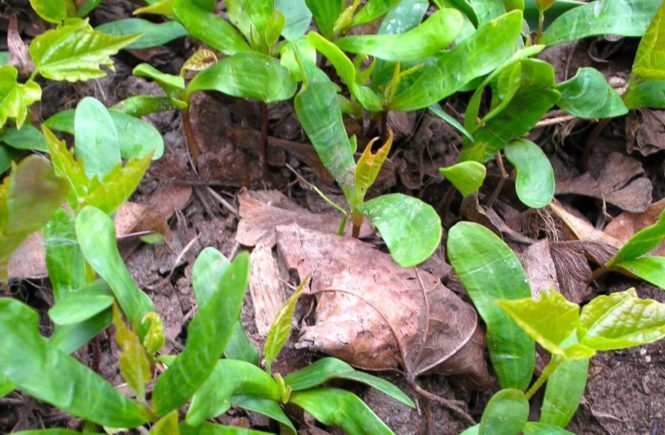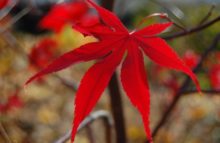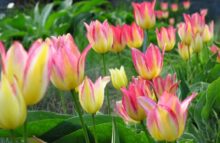
The conditions must have been so right for maple seed germination this year. In all my years gardening under Norway maples (Acer platanoides), I’ve never seen such an abundance. A veritable pro-leaferation!
If they were worth money, I’d be a gazillionaire.
I feel bad about pulling them up, but a small urban garden has room for only so many house-high maple trees, and I have my quota.
What with the seeds and voracious roots, I have a love-hate relationship with the Norways. Manitoba maples (Acer negundo), too. Sugar maples (A. saccharum) and red maples (A. rubrum) I love-love. Great big silvers (A. saccharinum) I appreciate – in other people’s gardens.
But Norways make dense, dense shade (great for climate control, hateful for gardening).
And both Norways and Manitobas have an intense will to live; witness the number that have inserted themselves quietly under fences and are now 50 feet tall. Like the one in my back yard. And my neighbour’s.
But you gotta love the way their load themselves with lacy green flowers. It took me a while to recognize the beauty of them. One minute the Norways are nude. One sunny day they burst forth with all that frothy flowerfulness. Then suddenly, without our noticing, there are leaves on the trees! Fresh, almost edible green (or red or crimson), before the city dust dulls them down. It’s remarkable.

Reddish-leaved Norway cultivars such as the ‘Schwedler’ and ‘Crimson Queen’ also make yellowish flowers that look striking against their emerging contrasting leaves.
So, despite their aggressiveness and my weeding-induced aggrievedness, I do love them. Today. Spring can do that to a girl.
I can even bring myself to like the dangly earring flowers of the Manitoba maple. I’ll do my best to forget that each of those dangly bits will be a cluster of highly viable seeds by fall, and a new forest of seedlings to yank up next spring.




